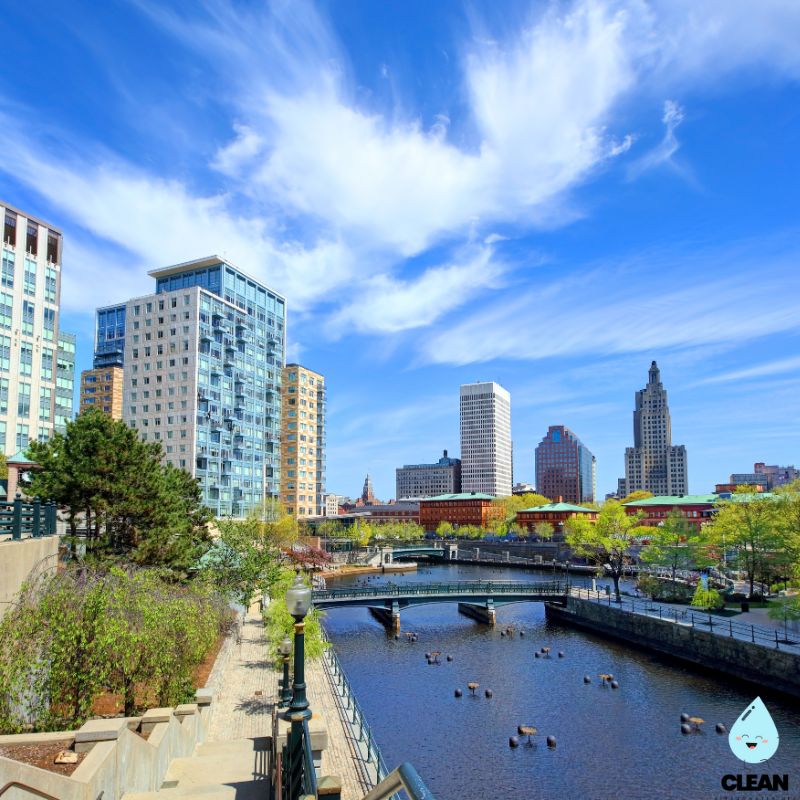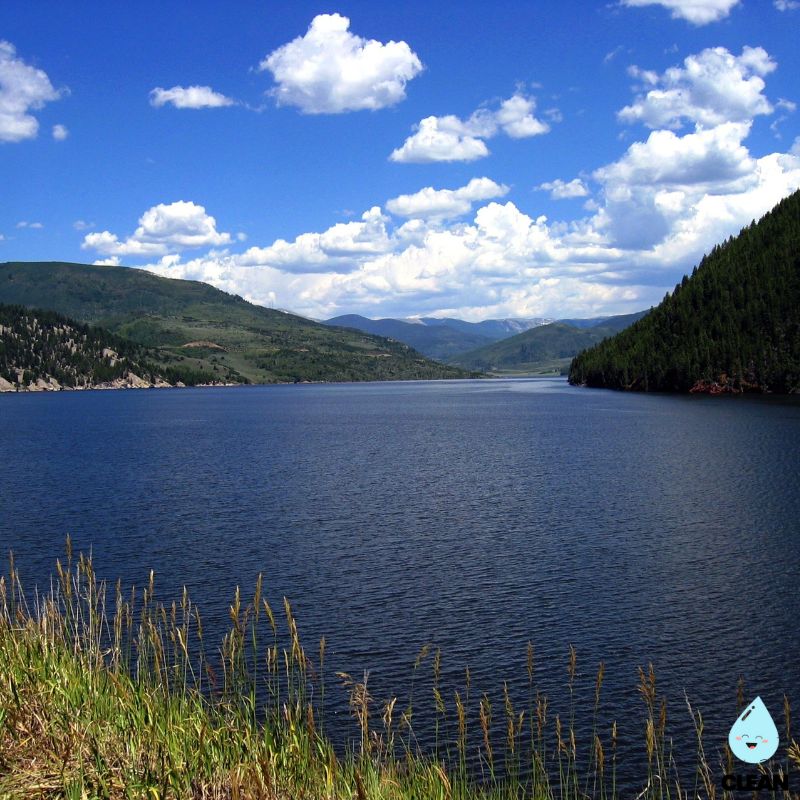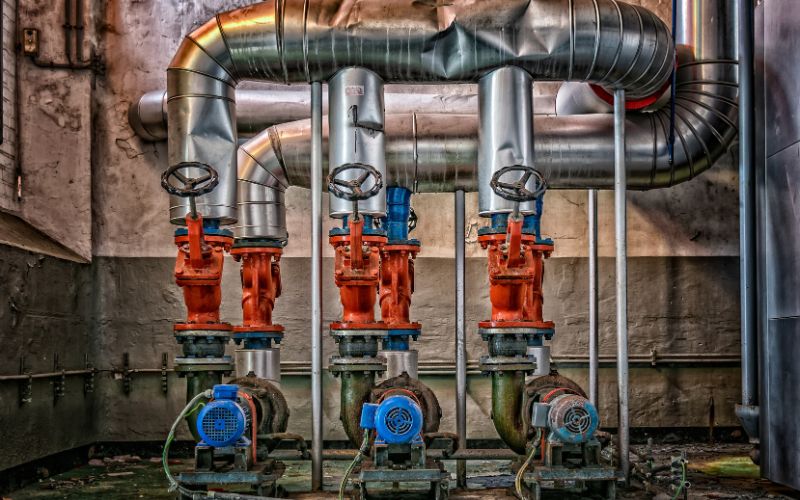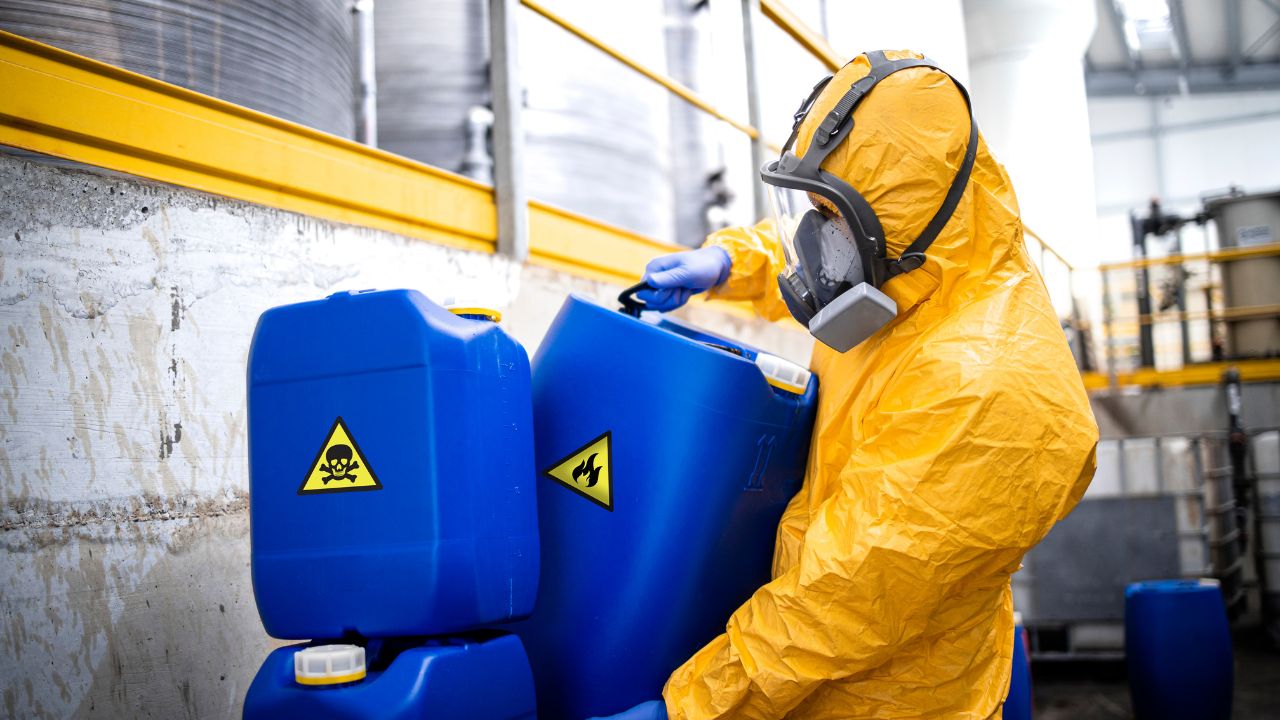Providence Water Quality at a Glance
ongoing lead crisis
Is Providence Water Safe to Drink?
Federally Compliant, But Serious Lead Problem – Providence water meets federal standards but has exceeded EPA lead limits for 15 of the last 16 years. Current lead levels are 22 ppb (47% above EPA’s 15 ppb limit). The city has over 27,000 lead service lines affecting 600,000+ residents. Additional concerns include PFAS “forever chemicals,” elevated disinfection byproducts, and aging infrastructure dating to the early 1900s.
⚠️ Key Concerns for Providence Residents
- Lead Service Lines: 27,000+ homes served by full or partial lead pipes; civil rights complaint filed over disproportionate impact on communities of color
- PFAS “Forever Chemicals”: Detected throughout Rhode Island water supplies; no federal requirement for removal or monitoring in Providence system
- Disinfection Byproducts: TTHMs at 71.8 ppb (close to EPA’s 80 ppb limit); linked to bladder cancer and other health issues
- Infrastructure Age: Water system dates to early 1900s; 1,040 miles of transmission mains serving RI’s largest water utility
Read the full report below for detailed analysis, city-specific data, and actionable recommendations for Providence residents.
Providence – Rhode Island – Water Quality Report 2025: PFAS Testing, Infrastructure Concerns & Safety across your city
Providence Water is Rhode Island’s largest water utility, providing drinking water to approximately 600,000 Rhode Islanders across more than a dozen communities through wholesale distribution. The utility serves over 75,000 direct retail customers in Providence, North Providence, Cranston, Johnston, and Smithfield. Founded in 1871, the system draws water from the Scituate Reservoir, the largest inland body of water in Rhode Island, with an aggregate capacity of 39 billion gallons and a surface area of 5.3 square miles.
Providence Water sources its drinking water primarily from the Scituate Reservoir system located in central Rhode Island, which includes six tributary reservoirs covering a total surface area of 7.2 square miles. The water is treated at the P.J. Holton Water Treatment Plant in Scituate, constructed in 1926. Providence Water faces ongoing challenges with aging infrastructure, lead service line replacement (with over 27,000 lead service lines affecting the system), and emerging contaminants including PFAS “forever chemicals” while maintaining federal compliance standards. The utility has exceeded EPA lead action levels for 15 of the last 16 years, with recent lead levels at 22 parts per billion compared to EPA’s 15 ppb limit.

Providence Water Quality: Current Status (2024-2025)
Latest Testing Results
- Lead and Copper Compliance: Providence Water has exceeded EPA’s lead action level for 15 of the last 16 years, with current lead levels at 22 parts per billion (vs. EPA’s 15 ppb limit). Over $28.6 million in federal funding has been allocated for lead service line identification and replacement efforts throughout 2024-2025.
- Testing Scope: Providence Water conducts extensive water quality monitoring in accordance with federal and state regulations, testing for over 200 regulated and unregulated contaminants annually.
- Compliance Status: While the utility maintains federal compliance with drinking water standards, it faces ongoing challenges with lead contamination and emerging contaminants like PFAS that have been detected throughout Rhode Island water supplies.
Water Sources
- Scituate Reservoir System: Primary source covering 94 square miles of watershed in central Rhode Island, including the main reservoir and six tributary reservoirs with a combined capacity of 39 billion gallons.
- Watershed Protection: Comprehensive watershed management program covering the protected watershed area, including forestry management, resident education programs, and access controls to maintain water quality.
- Source Water Assessment: The Scituate Reservoir system has been assessed as medium risk for contamination, with ongoing protection efforts and monitoring to ensure continued water quality.
Advanced Treatment Technology
- P.J. Holton Water Treatment Plant: Treatment facility utilizing conventional sand and anthracite filtration with chemical coagulation, capable of filtering millions of gallons per day to serve the greater Providence area.
- Multi-Barrier Treatment: Advanced treatment processes including coagulation, flocculation, sedimentation, rapid sand filtration, and chlorine disinfection to ensure comprehensive contaminant removal.
- Environmental Initiatives: Providence Water has achieved significant environmental milestones, including renewable energy initiatives, while focusing on infrastructure improvements and contaminant reduction.
Infrastructure Modernization
- Lead Service Line Replacement: Accelerated replacement program targeting the system’s 27,000+ lead service lines with $28.6 million in federal funding, offering free replacements for eligible properties and financial assistance for others.
- Distribution System Upgrades: Ongoing water main rehabilitation program with systematic replacement of aging infrastructure throughout the extensive distribution network serving multiple Rhode Island communities.
- Storage and Pumping Facilities: Strategic network of storage reservoirs and pumping stations ensuring water pressure and supply throughout the service area covering over 60% of Rhode Island’s population.
Customer Protection Initiatives
Providence Water provides comprehensive customer support through various programs, including lead service line replacement initiatives for eligible properties and financial assistance programs for qualifying customers. The utility maintains communication through annual water quality reports and 24/7 customer service availability at (401) 521-6300. Educational outreach helps residents understand water quality issues, lead exposure prevention, and the importance of infrastructure improvements. Providence Water’s commitment extends beyond basic service delivery through programs like the accelerated lead service line replacement initiative, watershed protection measures, and infrastructure investments aimed at addressing the system’s aging pipes and emerging contaminants while serving the majority of Rhode Island’s population.
Recommendations for Providence Residents

Check Lead Service Lines
Contact Providence Water at (401) 521-6303 to determine if your property has a lead service line. With over 27,000 lead service lines in the system, residents should prioritize testing and replacement. If eligible, sign up for the Lead Service Line Replacement Program.

Protect the Watershed
Support Providence Water’s watershed protection efforts by practicing water conservation and responsible chemical use. Participate in community education programs about protecting the Scituate Reservoir watershed that serves 60% of Rhode Island.

Consider Home Filtration
Given Providence’s lead contamination issues and detection of PFAS throughout Rhode Island, homes should consider NSF-certified filters (Standard 53) for lead removal and Standard 58 (reverse osmosis) for PFAS, especially for drinking and cooking water.

Report Water Issues
Contact Providence Water Customer Service at (401) 521-6300 for general inquiries or the Water Quality Hotline at (401) 521-6303 for water quality concerns, lead service line questions, or to report water main breaks and pressure problems.

Stay Informed
Read Providence Water’s Annual Water Quality Report available at provwater.com and sign up for notifications about water quality changes, system maintenance, and lead service line replacement opportunities in your neighborhood.
Frequently Asked Questions
Is Providence’s tap water safe to drink?
Providence Water meets federal drinking water standards, but faces significant challenges with lead contamination and emerging contaminants. The water comes from the Scituate Reservoir system and undergoes comprehensive treatment at the P.J. Holton Water Treatment Plant.
While Providence Water maintains federal compliance, the system has exceeded EPA lead action levels for 15 of the last 16 years, with current levels at 22 parts per billion (vs. EPA’s 15 ppb limit). PFAS “forever chemicals” have also been detected throughout Rhode Island water supplies. The utility conducts extensive monitoring for over 200 contaminants annually and serves over 600,000 residents, but residents should be aware of ongoing infrastructure challenges and consider protective measures.
What is Providence Water doing about lead service lines?
Providence Water has an aggressive lead service line replacement program funded by over $28.6 million in federal grants to address the system’s 27,000+ lead service lines:
• Free Replacements: Eligible properties in economically disadvantaged areas receive free private-side lead service line replacements
• Financial Assistance: Low-interest loan programs available for qualifying homeowners
• Public Side Replacement: When homeowners replace private-side lines, Providence Water replaces the public portion at no cost
• Civil Rights Response: The program addresses complaints about disproportionate impacts on communities of color
The program aims to address the ongoing lead crisis that has affected water quality for over 15 years. A civil rights complaint was filed regarding discriminatory practices in lead pipe replacement affecting minority communities.
Where does Providence’s water come from?
Providence Water sources all drinking water from the Scituate Reservoir system in central Rhode Island:
• Main Reservoir: The Scituate Reservoir is Rhode Island’s largest inland body of water with a 39-billion-gallon capacity and 5.3 square mile surface area
• Tributary Reservoirs: Six additional reservoirs contribute to the system, covering a total surface area of 7.2 square miles
• Watershed Protection: The 94-square-mile watershed includes comprehensive land management and protection efforts
• Water Quality: The source water assessment rates the system as medium risk, with ongoing protection efforts including access controls
The reservoir system was created in the 1920s and serves over 60% of Rhode Island’s population. Despite good source water quality, the aging distribution infrastructure presents ongoing challenges.
How can I get more information about my water quality?
Providence Water provides multiple resources for water quality information:
Annual Water Quality Report: Comprehensive annual reports available at provwater.com detail all testing results and system performance
Contact Options:
• Main Customer Service: (401) 521-6300 for general inquiries
• Water Quality Hotline: (401) 521-6303 for specific water quality concerns and lead service line information
Online Resources:
• Lead service line information and replacement program details
• Water quality reports and testing data
• Information about ongoing infrastructure improvements and programs
Given the ongoing lead issues and presence of emerging contaminants, residents are encouraged to stay informed about water quality conditions and available programs.
Quality News About Your Water
Get the comprehensive water quality news coverage you need with our dedicated US Water News Service. From coast to coast, we deliver in-depth reporting and expert analysis on PFAS contamination, EPA regulatory changes, infrastructure developments, and emerging water safety issues affecting communities nationwide. While mainstream media only covers the biggest stories, we provide the detailed, ongoing coverage that helps you understand the full scope of America’s water challenges. Whether you’re a concerned citizen, water professional, or community leader, our daily updates and analytical insights keep you informed about the issues that matter most to public health and environmental safety.
Contaminants of Concern

Lead from Service Lines
Source: Over 27,000 lead service lines throughout the Providence Water system and lead-containing plumbing materials in older homes; lead leaches into drinking water especially when water sits in pipes
Health Effects: No safe level for children; can cause irreversible harm to brain development, learning disabilities, behavioral problems, and reduced IQ; also affects adults with kidney and cardiovascular issues
Current Status: Providence has exceeded EPA action levels for 15 of the last 16 years, with current levels at 22 ppb vs. EPA’s 15 ppb limit; comprehensive replacement program underway with $28+ million in federal funding Action Required: Residents should test their service lines and consider filtration

PFAS “Forever Chemicals”
Source: Per- and polyfluoroalkyl substances detected throughout Rhode Island water supplies; contamination sources include military sites, fire stations, textile mills, and widespread industrial use
Health Effects: Linked to increased cancer risk, liver problems, weakened immune system, low infant birth weights, and fertility issues; chemicals persist indefinitely in the environment and human body
Current Status: PFAS have been detected in 81% of tested Rhode Island communities; Rhode Island has established 20 ppt maximum contaminant level for six PFAS compounds Protection: Reverse osmosis or activated carbon filters certified for PFAS removal
Please read – our information
The information presented on cleanairandwater.net is compiled from official water quality reports, trusted news sources, government websites, and public health resources. While we strive for accuracy and thoroughness in our presentations, we are not scientists, engineers, or qualified water quality professionals.
Our mission is to present water quality information in an accessible, real-world format that helps people understand what’s in their water and make informed decisions about their health and safety. We believe that complex environmental information should be available to everyone in a format that’s easy to understand.
We make every effort to ensure our content is current and accurate, but we cannot guarantee that all information is complete or error-free. This website should not replace official communications from your local water utility or health department. We always recommend consulting official sources for the most up-to-date information regarding your specific water system.
Clean Air and Water is not liable for any unintentional errors, omissions, or outdated information. The content on this site is provided for informational purposes only and should not be considered professional advice.


